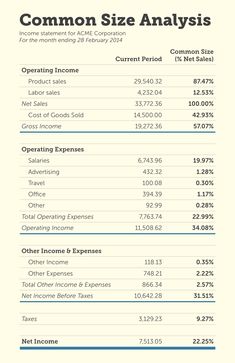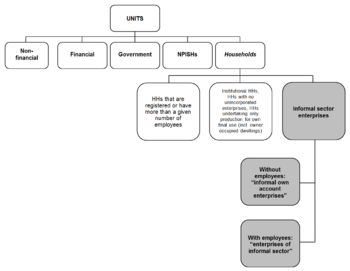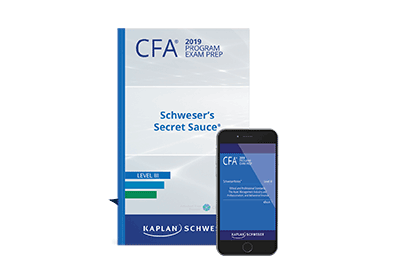Debit Credit Chart
Contents:


A ledger is the complete collection of all the accounts of a company. The ledger may be in loose-leaf form, in a bound volume, or in computer memory. Accounts should support management decisions during the current accounting period. They should also support comparison with previous periods. But it is pointless to collect information you cannot use. If you have employees, you need accounts for wages, contributions to retirement funds, etc.

So you’d have to record the transaction as a $1,000 debit in your cash account and a $1,000 in your bank loan account. Debit and credit balances are used to prepare a company’s income statement, balance sheet and other financial documents. Debits Credits Increase asset, expense and loss accounts. Recorded on the left side of an accounting journal entry. Recorded on the right side of an accounting journal entry. Now that you understand how to record debits and credits in an account and how all accounts together form a ledger, you are ready to study the accounting process in operation.
Now let’s examine a more complex example of a transaction that calls for debits and credits across multiple accounts. Let’s say your company sells $10,000 worth of monitor stands, and you’re based in Arizona, where the state sales tax is 5.6%. The total charge to the customer is $10,560, which will be the exact amount you will debit your accounts receivable. You will also debit your COGS accounts, which we’ll earmark as $5,000. Now we shift to the credit half of the recording process.
Credit vs Debit Examples
In common use, we use the terminology from the perspective of the bank’s books, hence the apparent inconsistency. Current liability, when money only may be owed for the current accounting period or periodical. “Daybooks” or journals are used to list every single transaction that took place during the day, and the list is totaled at the end of the day. These daybooks are not part of the double-entry bookkeeping system. The information recorded in these daybooks is then transferred to the general ledgers, where it is said to be posted.

Each of the following accounts is either an Asset , Contra Account , Liability , Shareholders’ Equity , Revenue , Expense or Dividend account. INVESTMENT BANKING RESOURCESLearn the foundation of Investment banking, financial modeling, valuations and more. Here we discuss the top differences between Debit and Credit with infographics and comparative table.
Trial Balance Solver for Accounting
Accruals are revenues earned or expenses incurred which impact a company’s net income, although cash has not yet exchanged hands. Double entry is an accounting term stating that every financial transaction has equal and opposite effects in at least two different accounts. Underneath, debits are listed on the left and credits are recorded on the right, separated by a line. Debits and credits are traditionally distinguished by writing the transfer amounts in separate columns of an account book.
The amount owed by a company is reflected in its liability account. Credit card balances, accounts payable, notes payable, taxes, and loans are a few examples. The income statement, balance sheet, and other company financial documents are created using debit and credit balances. Accounts for assets, expenses, and losses gain value from debits.
- Purchasing the equipment also means you increase your liabilities.
- In the below example of a journal entry, a business owner paid their employee’s salary.
- The latter method tends to provide a fuller view of your business’s accounts.
- Depending on the size of a company and the complexity of its business operations, the chart of accounts may list as few as thirty accounts or as many as thousands.
- Details of this balance constitute your financial position at any given time.
- Without further explanation, it is no wonder that there often is confusion between debits and credits.
You should be able to complete the debit/credit columns of your chart of accounts spreadsheet . Accounting professionals and bookkeepers may understand the concepts of debits and credits. Still, business owners who are used to daily thinking about credit and debit cards may find them difficult to grasp at first. Every transaction in the world of double-entry accounting affects two or more financial accounts, with a debit signifying value coming in and a credit signifying value going out. A company’s books remain balanced thanks to debits and credits.
Debits and Credits Accounting Formula
That rule reverses for the average collection period formula side of the sheet. In this case, the $1,000 paid into your cash account is classed as a debit. Perhaps you need help balancing your credits and debits on your income statement. These definitions become important when we use the double-entry bookkeeping method. With this approach, you post debits on the left side of a journal and credits on the right.
You can use the following standard chart of accounts as a basis for your chart of accounts. DebitDebit represents either an increase in a company’s expenses or a decline in its revenue. If you want to learn accounting, debit and credit would be the first concepts you would learn. The business borrows £5,000 on loan from a bank on 4 July 20X2. As you can see, Bob’s equity account is credited and his vehicles account is debited . — Now let’s take the same example as above except let’s assume Bob paid for the truck by taking out a loan.
Debits and credits will automatically post to the appropriate accounts once a transaction is created — the software can also handle that for some journal entries. In terms of recordkeeping, debits are always recorded on the left side, as a positive number to reflect incoming money. Simply put, balancing a business’s books involves recording how money flows in and out of the business and ensuring the entries “balance” each other out. These bookkeeping entries, which appear on a company’s financial statement, are also referred to as debits and credits. Understanding debits and credits helps you improve accuracy in recording business transactions. The transactions summarized by an account in the trial balance should be the same as those summarized by an account in the general ledger.
This https://1investing.in/ slide can be easily accessed in standard screen and widescreen aspect ratios. It is also available in various formats like PDF, PNG, and JPG. Not only this, the PowerPoint slideshow is completely editable and you can effortlessly modify the font size, font type, and shapes according to your wish. Our PPT layout is compatible with Google Slides as well, so download and edit it as per your knowledge. Presenting our Rules Debit Credit Personal Account Ppt Powerpoint Presentation Outline Cpb PowerPoint template design.
What type of balance is this account likely to have at year-end? Which one of the following columns in a cash receipts journal is not posted in total to an account in the general ledger? A business owner can also use T-accounts to extract information, such as the nature of a transaction that occurred on a particular day or the balance and movements of each account.
Use the Chart of Accounts-Divisions view on the View Financial Setups screen to review and print the entire chart of accounts, if needed. Long-term liability, when money may be owed for more than one year. Examples include trust accounts, debenture, mortgage loans and more.

Keep in mind that most business accounting software keeps the chart of accounts flowing the background and you usually look at the main ledger. Debits increase the balance of dividends, expenses, assets and losses. Credits increase the balance of gains, income, revenues, liabilities, and shareholder equity. This is shown in ledger or T-accounts by recording each transaction twice, once as a debit-entry in one account and once as a credit-entry in another account. This is done according to time-honoured rules which treat asset accounts differently from liability accounts and the capital account.
Relax—pay employees in just 3 steps with Patriot Payroll!
Revenue earned by a business adds to Assets, possibly by increasing a bank account. Or it might take the form of a receivable, that is, an amount earned and invoiced to a customer but for which money has not yet been received from the customer. A receivable is still an asset, because it has value to your business.
The purchase of $150 of office supplies on a credit card would result in a debit posted to the office supply account and a credit to the credit card account. This would increase the office expense account and increase the credit card liability account. If you want to decrease your liabilities without also decreasing your assets, you need to find someone willing to invest in your business.
What Are the Rules of Debits and Credits for the Balance Sheet and … – The Motley Fool
What Are the Rules of Debits and Credits for the Balance Sheet and ….
Posted: Sat, 04 Feb 2017 11:20:34 GMT [source]
Let’s consider the following example to better understand abnormal balances. Increase the accounts for gain, liability, equity, and revenue. An increase in value resulting from non-core business activities is reflected in a gain account. Examples include monetary awards from legal proceedings and increased value from selling assets or commercial real estate. In the below example, Jaclyn, the owner of a coffee shop, purchased an espresso maker.
A debit card is used to make a purchase with one’s own money. A credit card is used to make a purchase by borrowing money. A description of the accounts in the balance sheet and income statement with a description of which will increase and decrease the account.